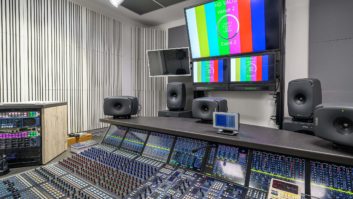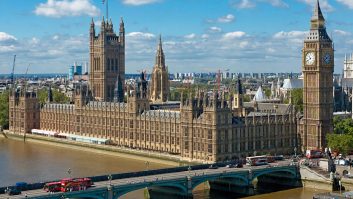To the surprise of many, audio leapt dramatically from the wings at London’s HD Masters conference with a consensus that 5.1 surround sound should be seen as an integral part of HD rather than a bonus, writes Richard Dean.
The reason for all the attention was simple – putting this into practise is not as easy as some had expected it to be. Major concerns arose over maintaining lip-sync (a point ably demonstrated by a persistent delay in the sound reinforcement system), and how to ship multichannel audio around infrastructure originally designed for stereo.
Ethan Bush, senior project director at California-based firm National TeleConsultants highlighted the conundrum that while an audio delay can be added to offset picture processing on Texas DLP projectors, this doesn’t work if other viewers are watching the same pictures on lower-latency screens such as CRT.
Describing a recent major digital refit at PBS affiliate KQED in the US, Bush said that embedding audio within baseband picture feeds was safer than running MPEG pictures with separate audio, as any picture delay would equally affect audio and thus maintain sync.
Jonathan Godfrey of Canadian surround sound microphone manufacturer Holophone said that the Dolby E system, which matrixes eight channels of audio into two, was “probably being used beyond its original concept,” amid complaints from Bush about the difficulty of gaining access to the proprietary Dolby E metadata on third-party systems. Others talked of the ‘nightmare’ of adding a voice-over to an encoded Dolby E datastream, which is a routine requirement for flagging up the next programme over the end credits.
John Couling from Dolby said it was true that Dolby E causes a one-frame delay on both encoding and decoding, and while some VTRs incorporate a delay function to offset this, others need outboard equipment. In either case, careful planning was required to avoid timing glitches. However on the access issue he claimed that some Dolby E information was now available to third-party manufacturers, through a registered disclosure scheme operated by SMPTE.
Meanwhile BSkyB chief engineer Chris Johns revealed that one of the reasons HDCAM-SR was chosen for the launch of SkyHD was for the extra audio tracks (12 instead of plain HDCAM’s four). Several others said they would like even more, both to avoid matrixing and to accommodate surround sound language dubs.






